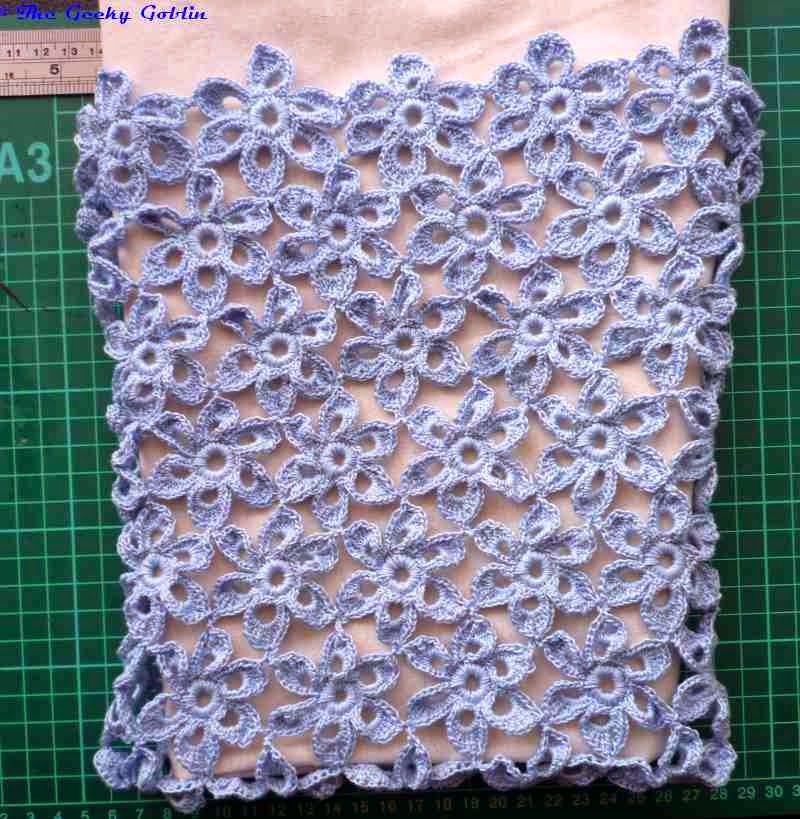This post is going up 28th December so if you are sitting around the house, tired from the Boxing Day Sales (or avoiding the shops completly) it's a fun couple of hours (most of that time being design- decision making is hard!)
 |
| This small calendar has tear off pages and sits nicely on a desk or table |
*well, stole questions from various places online
Materials
- Various scrapbook papers 7.5 cm x 11 cm
- One piece of light card 7.7 cm x 23.5 cm
- Print out of months- I just googled '2015 calendar' and found something that would work for me. If you are reading this post in a later year, obviously change the year to something suitable!
- Decorative bits (my theme was a Discworld stamp calendar but you could go with anything you like)
- Hole punch- smaller holes would work better but you could probably make do with a holepunch.
- Pretty string (it will be visible and need to hold the calendar together so choose carefully)
- Needle with an eye big enough for the string
- Drill with small drill bit
- Pretty button
Note- all the sizes are based on what I made, with minimal layers on each page. If you make your pages with lots of layers/thickness you will need to adjust some of these dimensions, particularly for the cover.
Method
Step 1 is the hardest part- deciding what papers to use for what month!
Draw a faint line on the bottom of your calendar, 2 cm from the bottom. Use this as a guide to make a row of holes for each page using the holepunch. This is what will let you tear away months as they pass. Spacing of the holes will depend on what size punch you have. If you are worried, have a practice on a bit of scrap paper to see what is the best spacing to allow you to tear away later.
Layout and glue down the bits to make your calendar up. Make sure you keep your work above the row of holes.
Now for the cover. Take the card and score at the 2.5, 3, 14, 14.5 cm lengths (if your pages are thicker then adjust here accordingly).
 |
| Scoring the lines with a knife or a bone folder (note- not actually made of bone these days!) is crucial for crisp folds |
Fold at the score marks and check if your pages fit into the cover correctly.
 |
| Horray, the pages fit in nicely! |
Now to mark out the dots to drill with. Exact measurements don't matter, provided things look symmetrical. You want to make three holes in a triangle, with one dot in the middle and further from the bottom than the other two. See the picture and you'll see what I mean.
 |
| Location of holes and numbered so you can follow the next bit. Note my incredibly useful little hand drill |
 |
| Appearance after step 1 |
- Starting from the front, go through hole 2 leaving a length of around 10 cm of string.
- Go through hole 2 again from the front and pull tightly.
- From the back, bring the needle through hole 1 to the front, then loop the thread around the bottom and bring the needle through hole 1 again from back to front.
- Loop the thread around the left side of the book and through hole 1 again from back to front.
- Put the needle through hole 2 from the front and bring the thread around the left side to the front before putting the needle through hole 2 again from front to back.
- On the back, put the needle through hole three to bring it to the front. Take the thread to the back around the base and back through hole 3 .
- Take the thread to the back again and through hole three.
- Bring the needle through hole 2 and you should have the pattern now completed.
Tie the threads off (a drop of clear nail polish is a good way to secure the knot) but leave about 10 cm of length for each.
The threads will be used to wrap around a button to hold the cover closed or open in place on a desk. Just put the button onto the cover, use a pencil to mark where the holes are and punch out with a needle or holepunch. Sew the button into place and tie string off at the back.
And you are pretty much done. I prettied up the cover, just because I could but you could also leave it plain if you preferred.













































